Our pick of the best to-do apps in iOS 15 for 2022
Plenty to tick off the list
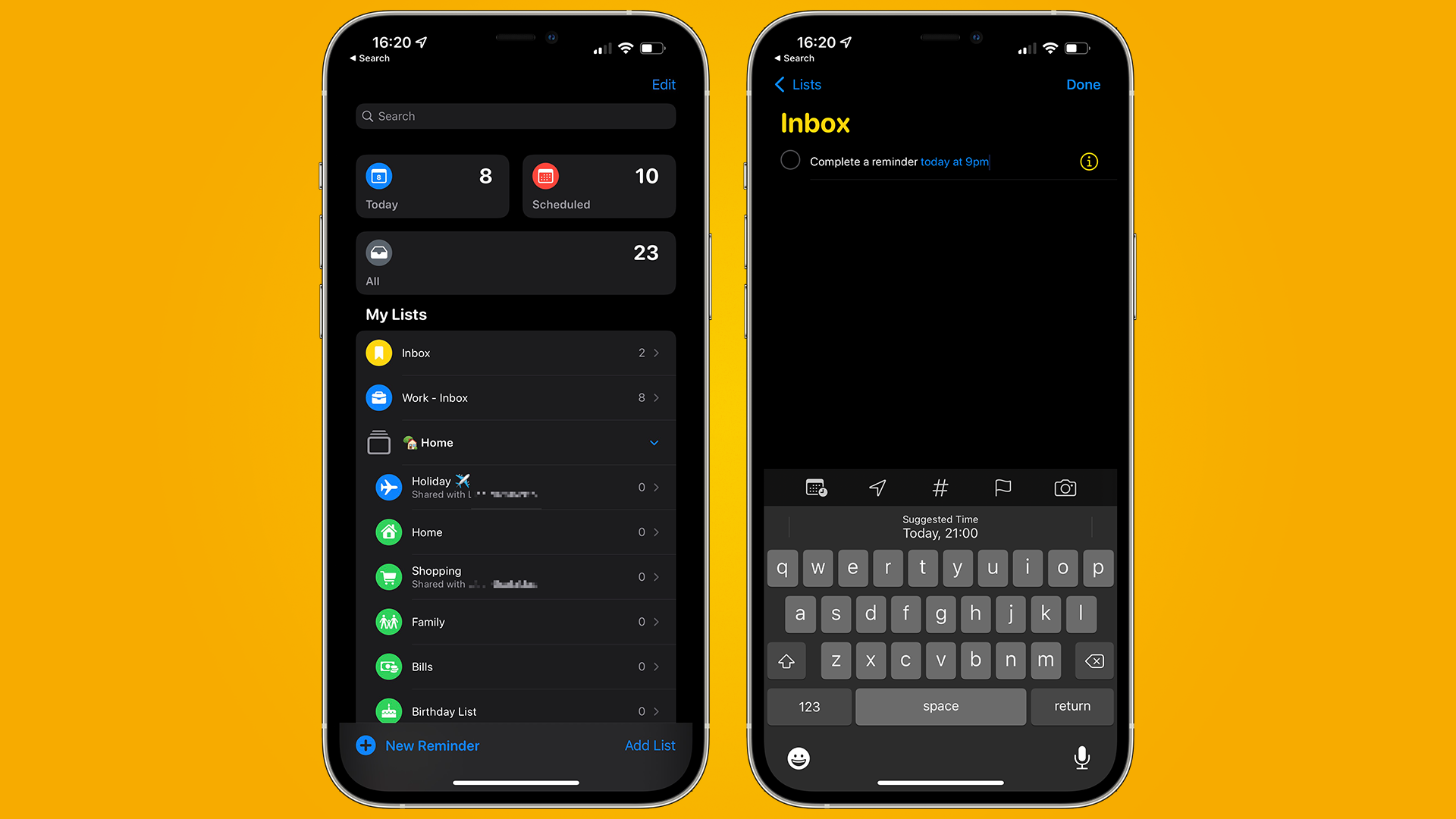
We all live busy, hectic lives these days and, with so many distractions around us to draw our attention away from the things we need to get done, we could use some organization.
The iPhone has an ever-improving to-do app built right in, but if you’re looking to take things to the next level with some more advanced options, there are also some very impressive third-party reminder apps available to you.
If you are constantly forgetting when your cars are due for a service or when you need to pay that important bill then you could use a to-do app.
Below, we highlight five of the best to-do apps on iOS to help you get things done and keep your focus on what's important.
Apple Reminders
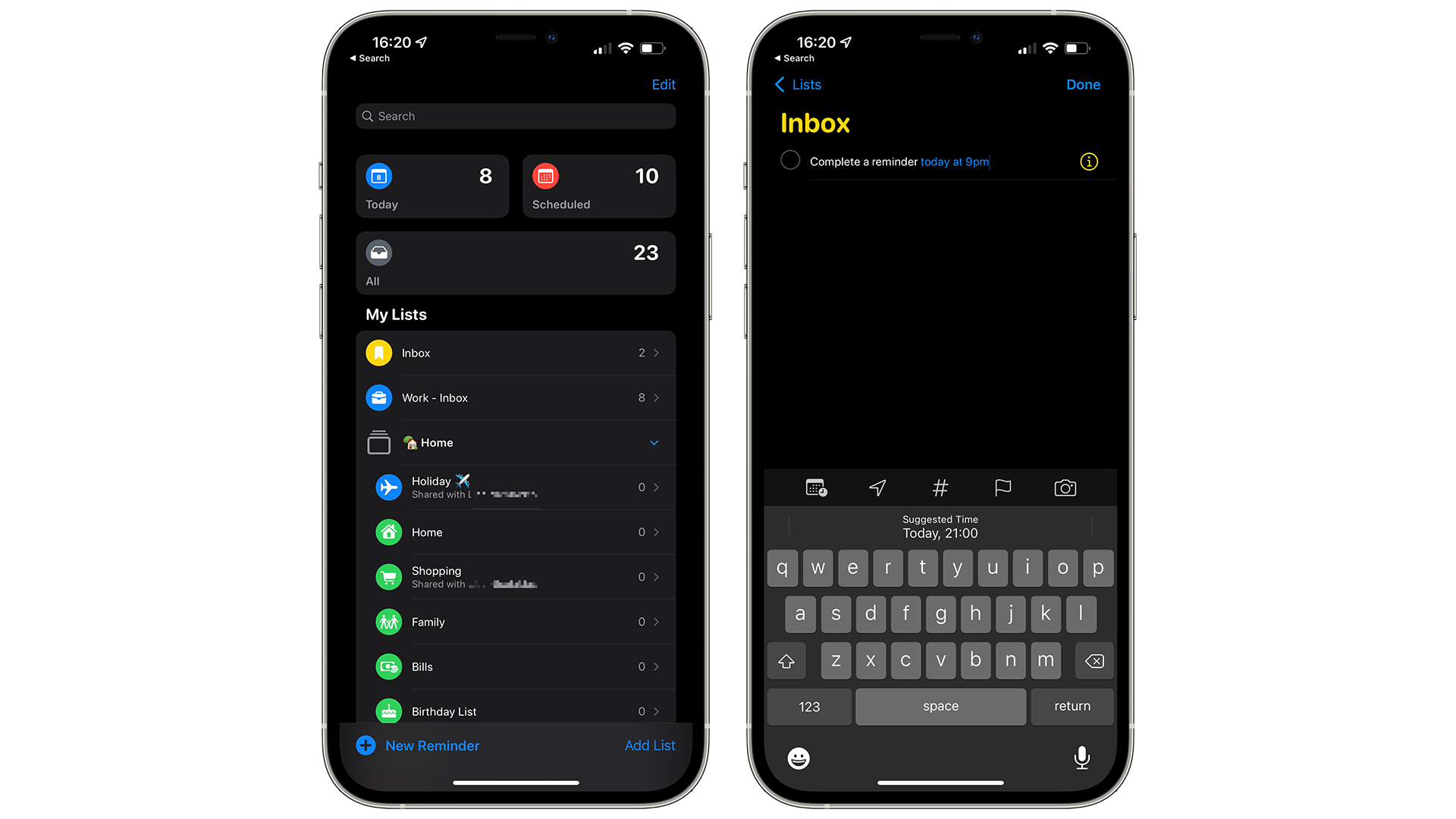
The Reminders app from Apple is on every iOS device out of the box. As with other Apple built-in apps, it can feel quite basic initially, but for many, this clean simplicity is what makes it shine. Dig a little deeper, however, and you'll find more depth to the app than you’d imagine.
A major plus point of the Reminders app is its deep integration with the system itself. As you’d expect, it works well with Siri, which can even be invoked within apps like Mail with the phrase ‘remind me about this email.’ This will alert you at the chosen time and also let you jump directly back to the app.
Stock Apple apps can go years without any real updates, but Reminders has been refreshed year after year for some time now. With iOS 15, quite a few new features have helped the app keep up with some premium third-party apps.
Get daily insight, inspiration and deals in your inbox
Sign up for breaking news, reviews, opinion, top tech deals, and more.
Tagging was introduced, so now you can easily group and view all items with the same tag via the new Custom Smart lists feature. One long-requested feature that made it into the iOS 15 release is natural-language support, so you can type statements such as ‘Call Mike every other Friday at 5PM.’
Other useful features include the ability to add picture attachments to tasks and an option to be reminded about a due item the next time you message the chosen individual. Now you’ve got a strong to-do app ready to be put to use.
GoodTask
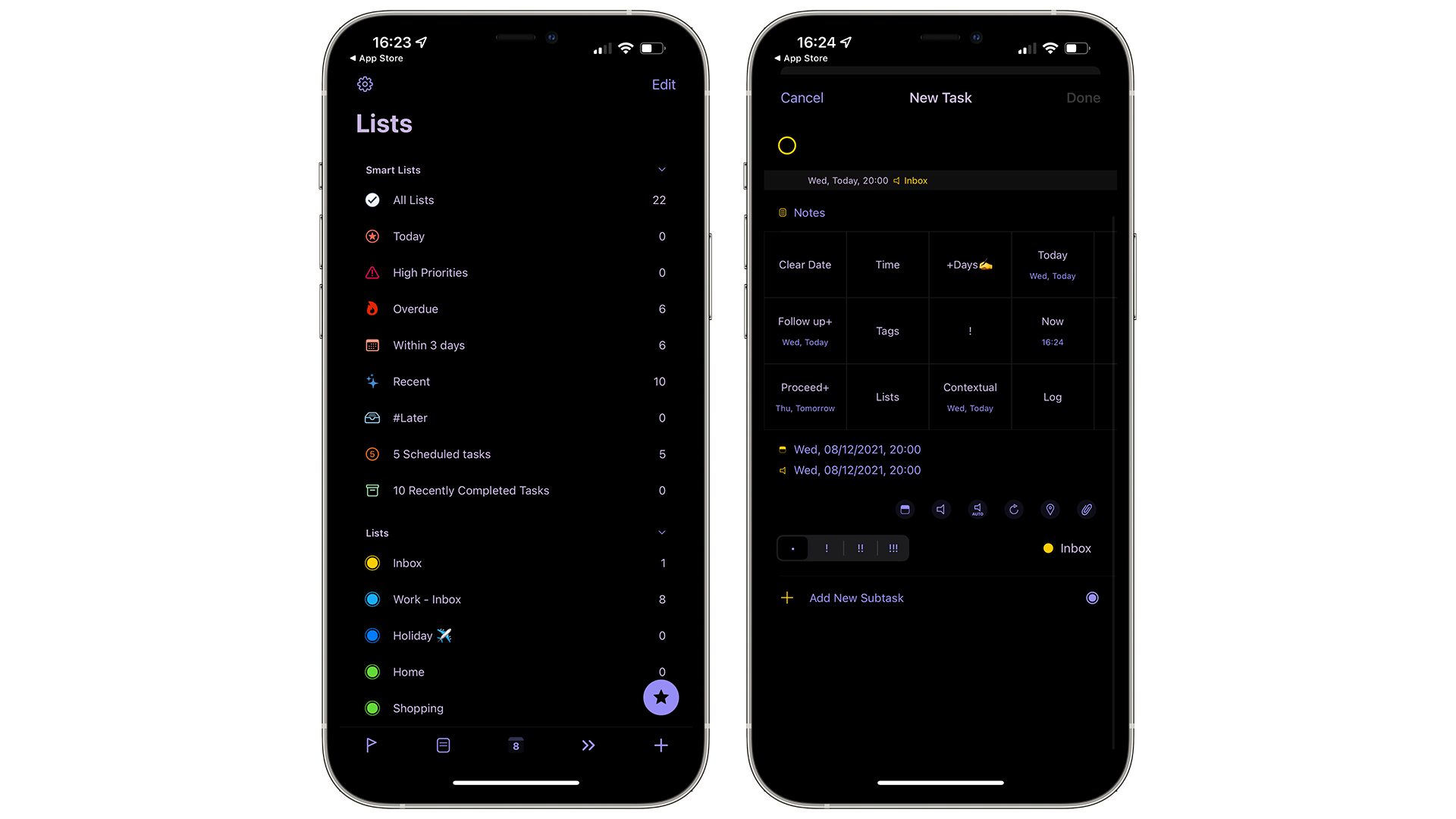
If Apple’s Reminders app is the Ford pickup of the to-do world, then GoodTask is the Tesla Cybertruck equivalent. GoodTask takes everything you get in Reminders and soups it up.
GoodTask is free, but there's an in-app purchase of $9.99 / £8.99 / AU$14.99 to fully unlock the app. It's based on Reminders, but it adds a lot more advanced features not available in Apple's app. Some of these features include quick actions that can be customized to help you enter new to-do items quicker, such as marking the item due in +5 hours or automatically tagging it.
The app offers a lot of options to customize both the layout and theme to really make it fit around the way you work and not vice versa. GoodTask is a universal app, so it works across all iOS and iPadOS devices. It also has a very good macOS and Apple Watch app to round things off.
GoodTask is the ideal app for anyone that doesn’t want to sign up for yet another service that will hold your data, or for those that like the Reminders experience but need more power-user features that the stock app just doesn’t offer currently.
Todoist
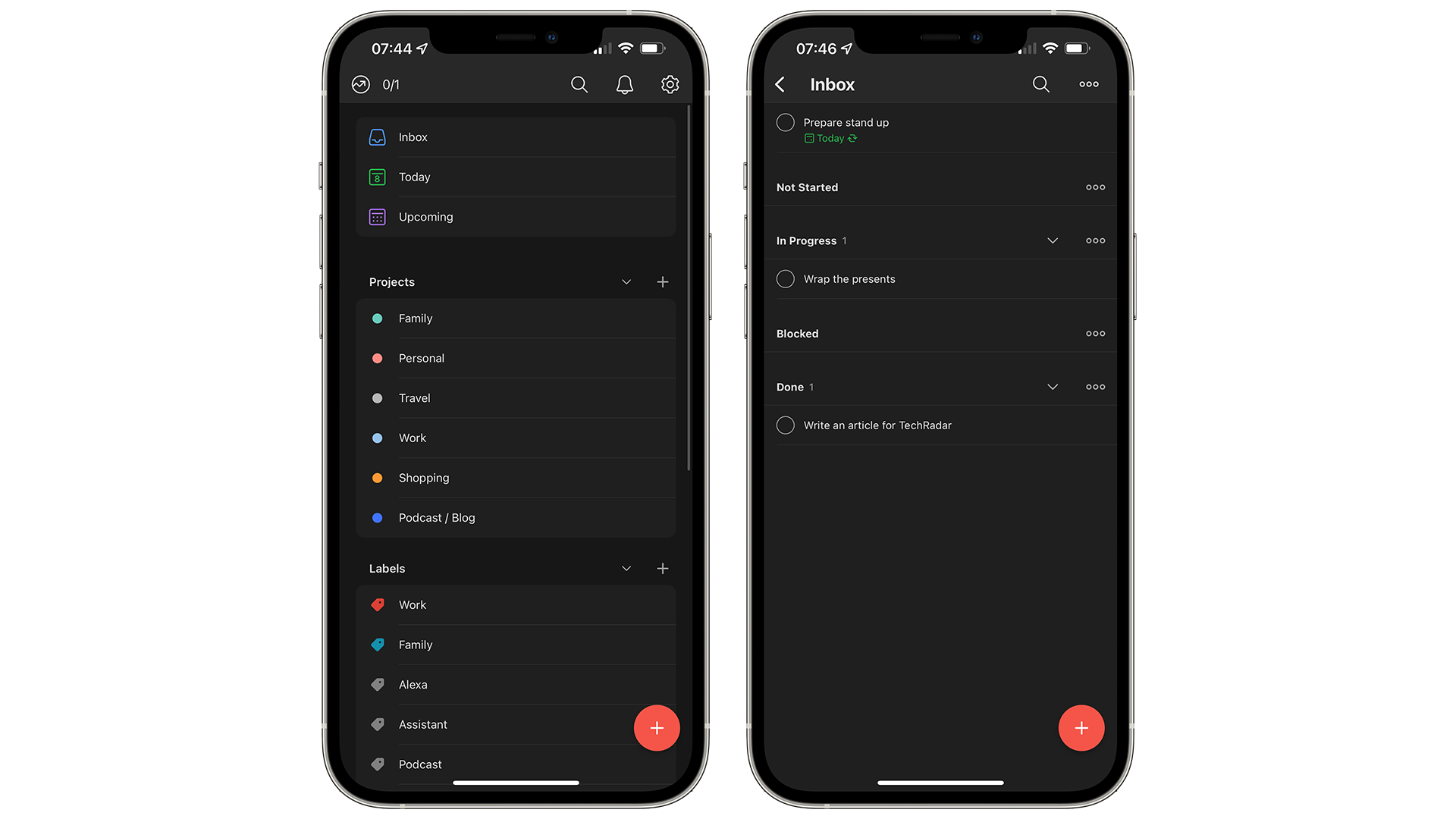
While the first two options on this list focused on Apple device users, many people don’t have the luxury of using just one device manufacturer to get their work done. There are also some very good to-do apps for iOS that can be used across Android, Windows and the web. One of the best examples of a truly cross-platform to-do app is Todoist. The ability to use this service both in and out of the Apple ecosystem makes this a strong option for those of us that use a Windows PC for work but use Apple hardware and software outside the office.
Todoist has been around for a long time and offers a clean, easy-to-use interface that looks at home on any platform and syncs seamlessly between each one. A strong selling point beyond the option of using it truly anywhere is the fantastic natural-language reminder entry, which lets you describe what you want it to do in a natural, non-robotic way. You could say something like: ‘Remind me to pay the gas bill on the 27th of every month’ and Todoist would set this recurring event for you automatically.
Todoist is a freemium product, which means the app is free to download but includes an optional subscription to add extra functionality. The free tier is, actually, very generous. The extras you get with a subscription, such as the ability to add up to 25 people to each project, themes, and custom icons are nice to have, but definitely don’t hinder a single user from using the app to great effect.
If you really want to go to the next level with your tasks, Todoist even offers a Kanban board view so you can get a better visualization of various interconnected tasks across a large project. For those unfamiliar, a Kanban board allows you to display all tasks on a single board, which you can drag between statuses such as ‘not started’, ‘in progress’, and ‘done’.
If you’re looking for a feature-rich to-do app that works perfectly on any device you use then Todoist may be the perfect app for you.
Things 3
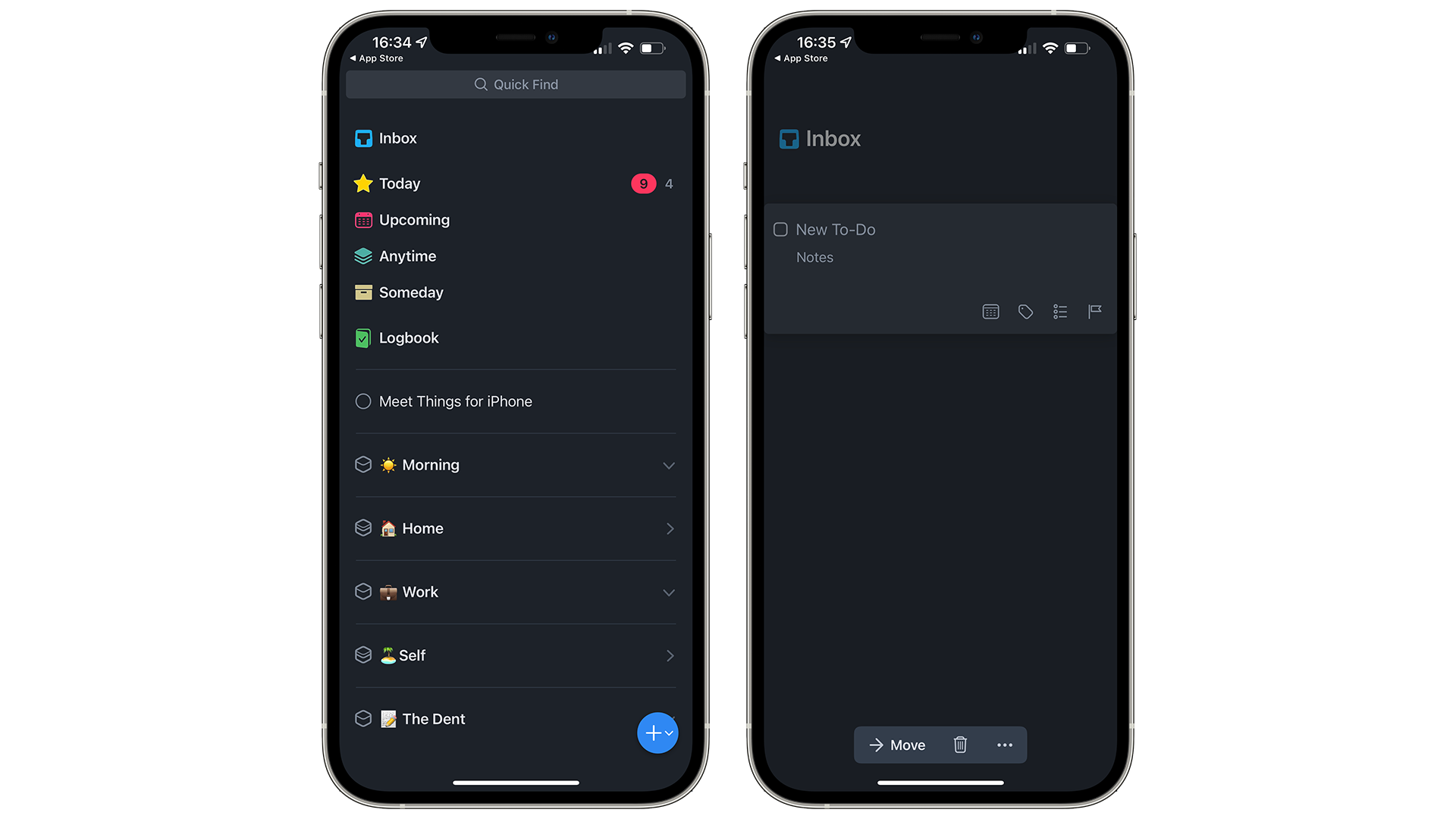
Of all of the to-do apps in this roundup, Things 3 is the least flexible both in terms of functionality and options for using it across multiple, non-Apple platforms. It loses points for no web app or Windows version, but it makes up for it in pure good looks. Costing $9.99 / £8.99 / AU$14.99, the app oozes charm and fluidity and is very rigidly based on the GTD (Get Things Done) methodology.
This app has won two Apple Design Awards in the past, but it’s more than just a well-designed to-do list. Things 3 includes unparalleled keyboard shortcut support, keyboard navigation, calendar integration, and some very nice widgets. It also has one of the best Apple Watch apps in the business.
With Things 3 you can, as you would imagine, add standalone tasks one at a time, but a big strength for the app is the ability to quickly convert a single to-do item into a project. You can then fill it with subtasks and more detail about the project itself. Things 3 is an app you should turn to when a simple ‘one item at a time' to-do system just won’t do.
There are some downsides to Things 3 to consider. The main sticking point is the relatively expensive upfront cost and the fact that you have to buy it separately for every device you want it on. A lack of Windows or web support may also put people off, but if you want a great-looking app with a lot of muscle under the hood then look no further.
OmniFocus 3

Some may describe Things 3 as form over function. OmniFocus 3, on the other hand, may tip the balance the other way. That’s not to say OmniFocus isn’t decent looking, in its own special way, but it certainly lets its functionality do the talking.
Of all the apps or services listed here, OmniFocus is the most advanced, with a focus on power users and those with large projects to manage. While it’s perfectly usable by anyone, you’re unlikely to get the most out of it unless you have a lot on your plate.
Available as a subscription of $9.99 / £9.49 / AU$15.99 a month, its emphasis is on creating and managing larger projects where you can tag your tasks with places, people, or priorities. By tagging tasks as much as possible, OmniFocus encourages you to manage tasks through what it calls ‘perspectives’. So, for example, if you have a work project with Bob from Accounts, you could filter down to all tasks tagged with ‘work’ and ‘Bob’ and work through all relevant tasks.
To get the most out of OmniFocus you would need to live a very busy and organized life. If this doesn’t apply to you, the app may be overkill. If it does apply to you, however, this is a powerful and flexible app that would help you de-stress, focus, and get things done.
- We pick the 10 best widgets on iPhone and iPad